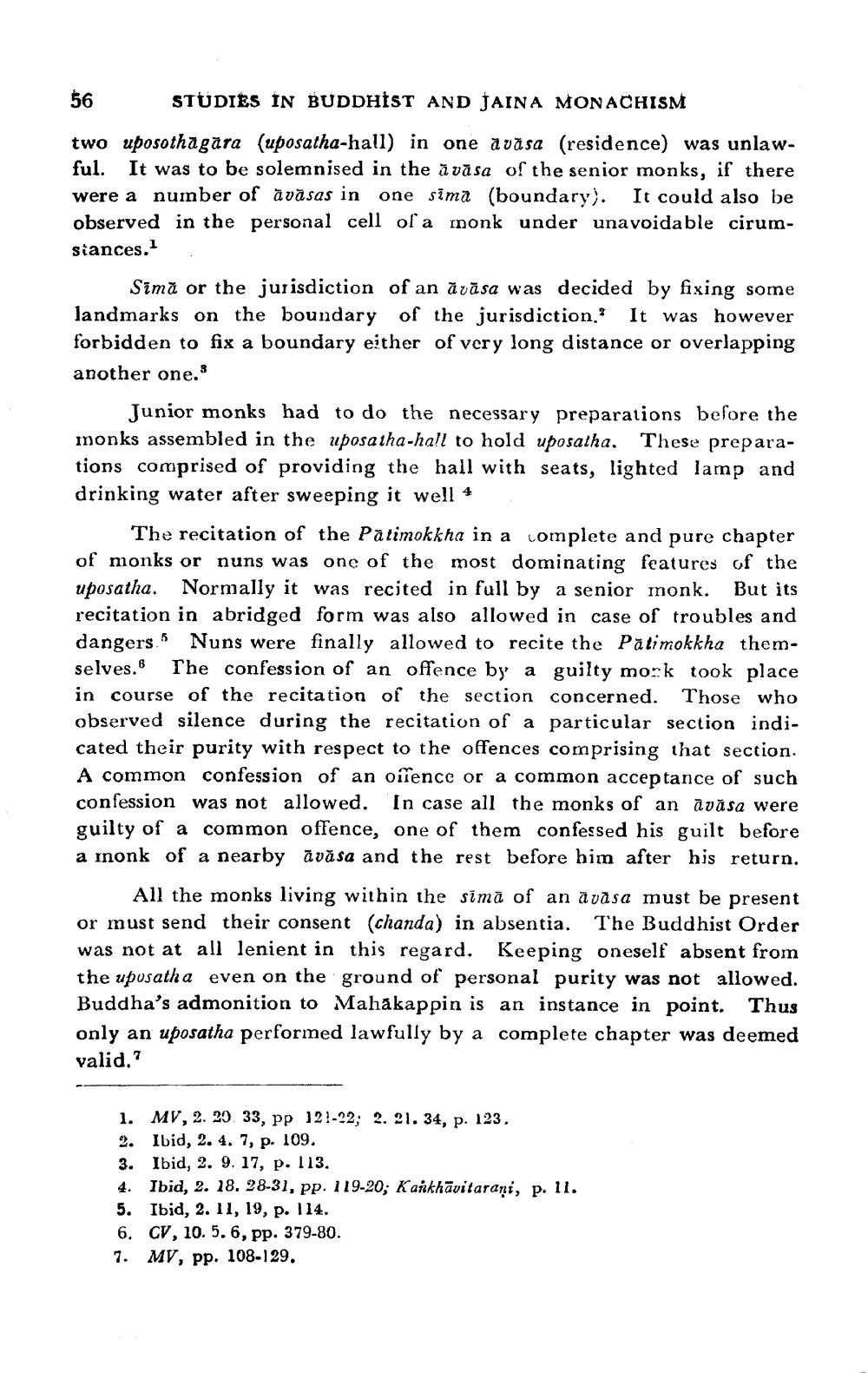________________
56
STUDIES IN BUDDHIST AND JAINA MONACHISM
two uposothagara (uposatha-hall) in one avāsa (residence) was unlawful. It was to be solemnised in the avāsa of the senior monks, if there were a number of äväsas in one sima (boundary). It could also be observed in the personal cell of a monk under unavoidable cirumsiances.
Simă or the jurisdiction of an ārāsa was decided by fixing some landmarks on the boundary of the jurisdiction. It was however forbidden to fix a boundary either of very long distance or overlapping another one.
Junior monks had to do the necessary preparations before the monks assembled in the uposatha-hall to hold uposalha. These preparations comprised of providing the hall with seats, lighted lamp and drinking water after sweeping it well 4
The recitation of the Patimokkha in a complete and pure chapter of monks or nuns was one of the most dominating features of the uposatha. Normally it was recited in full by a senior monk. But its recitation in abridged form was also allowed in case of troubles and dangers. Nuns were finally allowed to recite the Patimokkha themselves. The confession of an offence by a guilty mozk took place in course of the recitation of the section concerned. Those who observed silence during the recitation of a particular section indicated their purity with respect to the offences comprising that section. A common confession of an oiflence or a common acceptance of such confession was not allowed. In case all the monks of an āvāsa were guilty of a common offence, one of them confessed his guilt before a mnonk of a nearby ävăsa and the rest before him after his return.
All the monks living within the simā of an avasa must be present or must send their consent (chanda) in absentia. The Buddhist Order was not at all lenient in this regard. Keeping oneself absent from the uposatha even on the ground of personal purity was not allowed. Buddha's admonition to Mahakappin is an instance in point. Thus only an uposatha performed lawfully by a complete chapter was deemed valid.?
1. MV, 2. 29. 33, pp 121-22; 2. 21. 34, p. 123. 2. Ibid, 2. 4. 7, p. 109. 3. Ibid, 2. 9. 17, p. 113. 4. Ibid, 2. 18. 28-31, pp. 119-20; Kankhävitarani, p. 11. 5. Ibid, 2. 11, 19, p. 114. 6. CV, 10.5.6, pp. 379-80. 7. MV, pp. 108-129.




